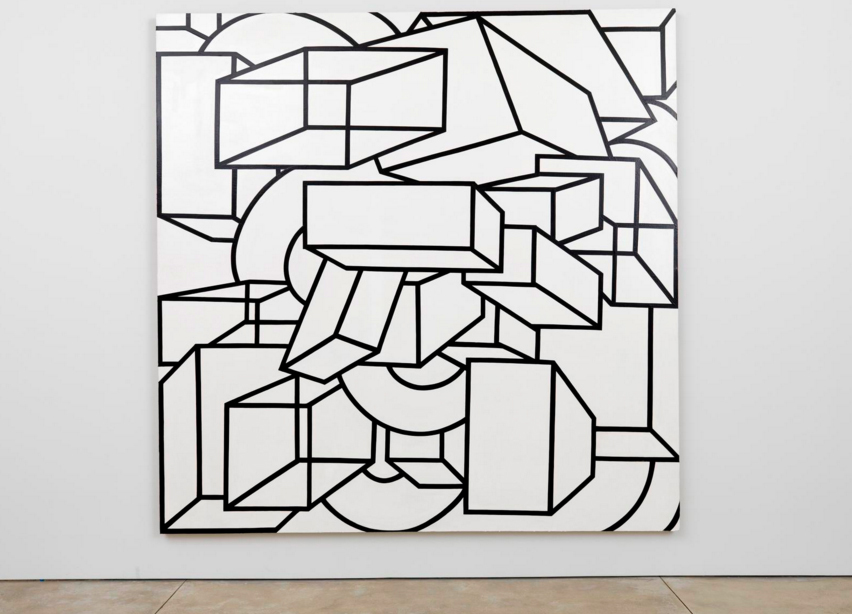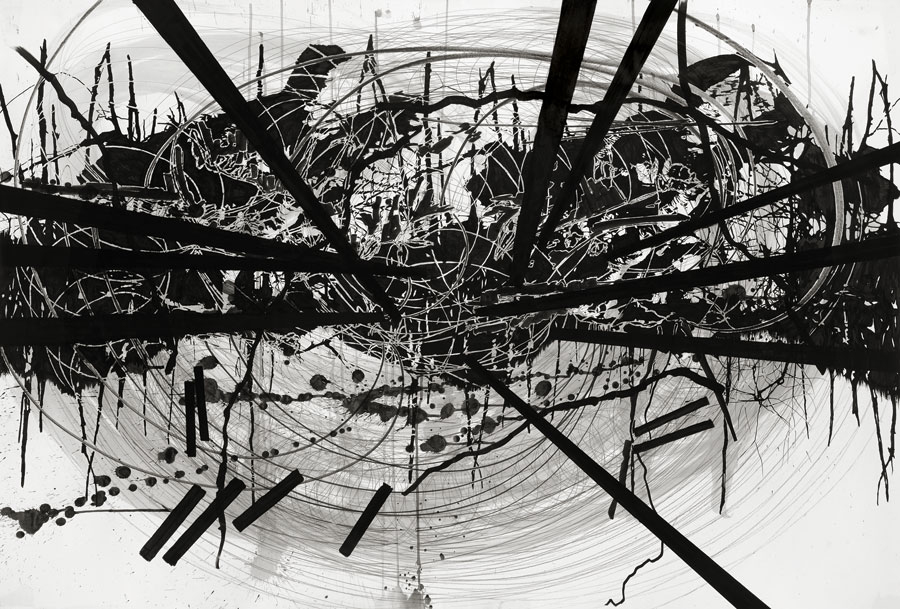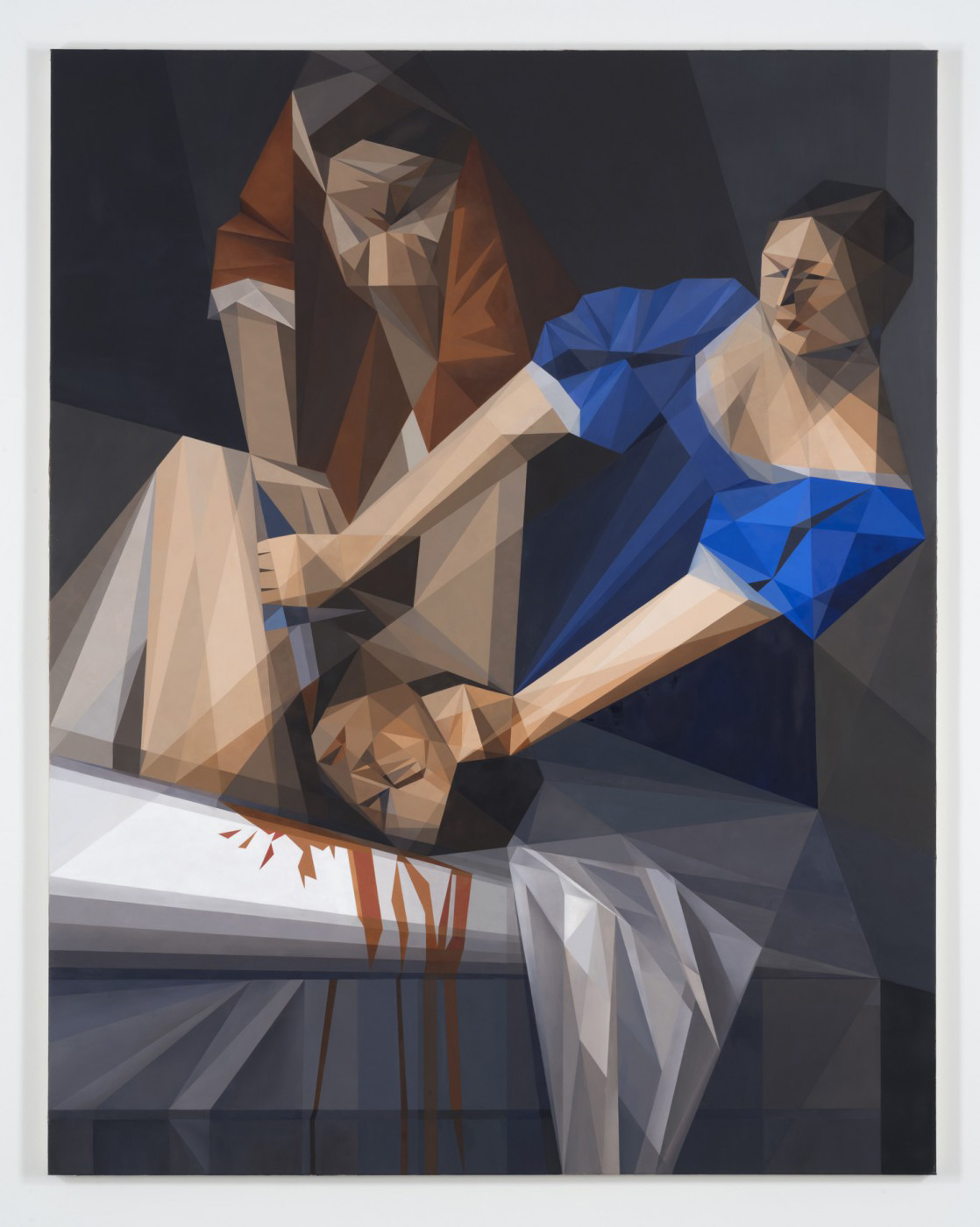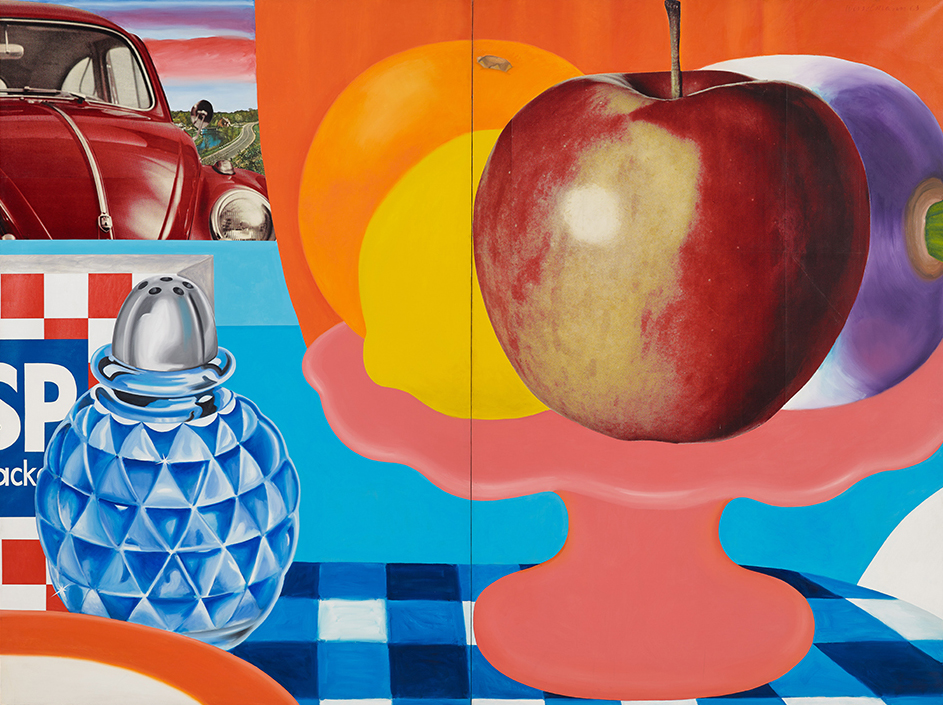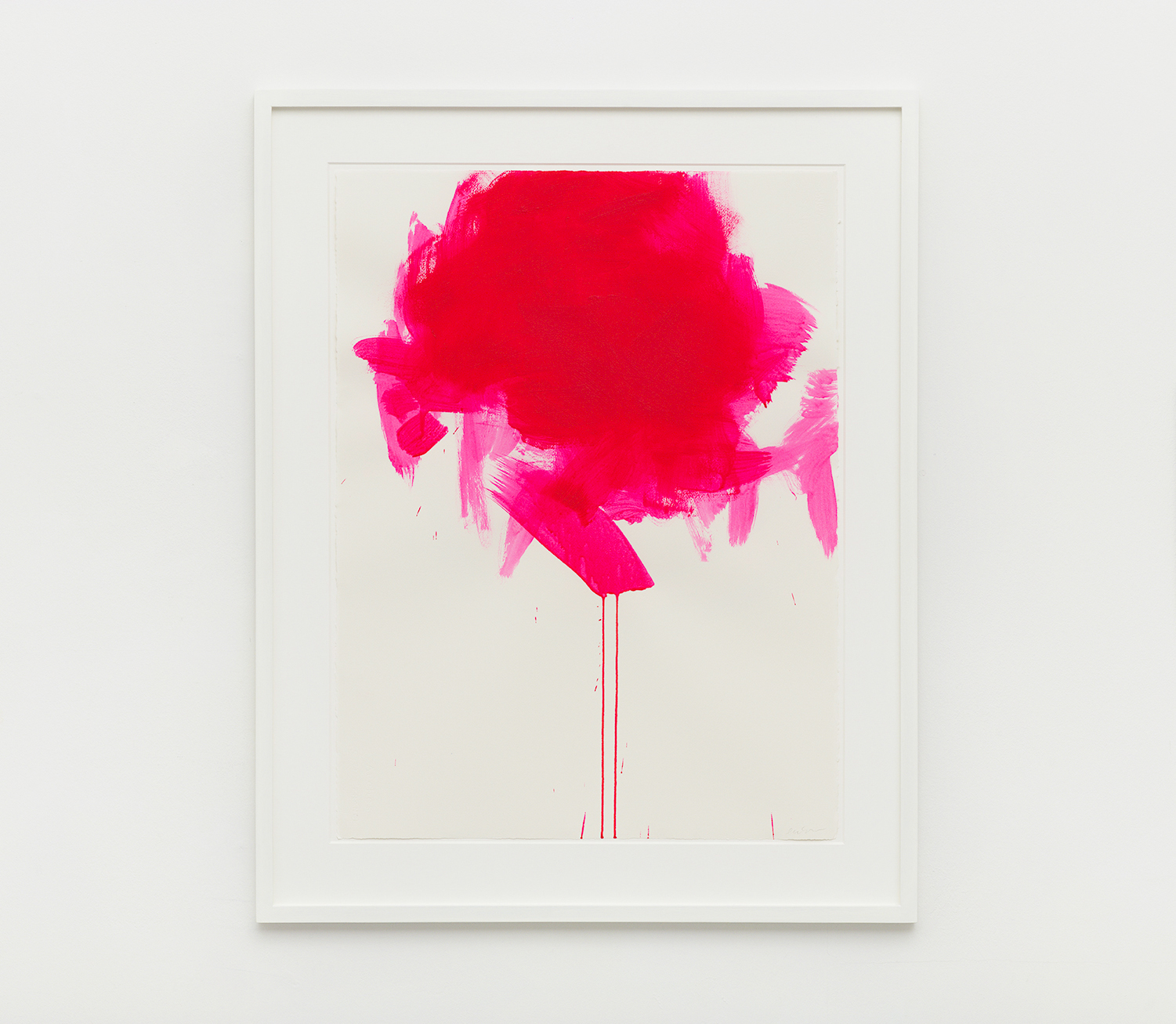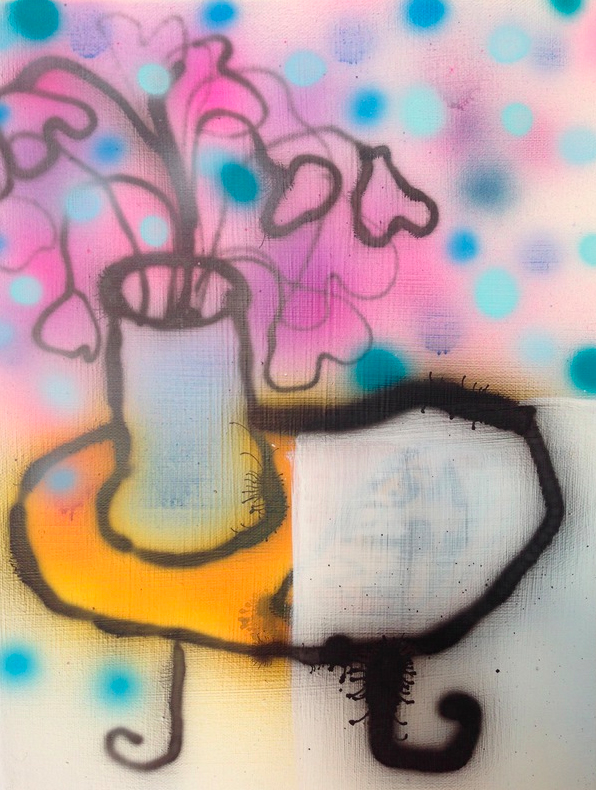AL HELD – BLACK AND WHITE PAINTINGS
2016-03-07This exhibition focuses on the unique series of paintings Held began in1967, in which various geometric forms, arranged in multiple perspectives, are rendered within the strict confines of a black-and-white palette. Perhaps inspired by the India ink drawings of lines, circles, triangles, and squares that he made in 1966, Held had already begun moving away from the flat, boldly-colored shapes of his earlier work. Using charcoal and white acrylic directly on canvas, he started sketching multi-dimensional, interlocking configurations, surrounding them with colored ground. In late 1967, this experimentation yielded to an increasingly graphic, complex, and illusory space. While compositions were still worked out on the canvas, often in several iterations, Held’s soft-edged charcoal was replaced by the sharply defined contours of uniformly painted forms, their thick black outlines positioned against a stark white field.
The paintings featured in this exhibition encompass the initial phase of this new body of work. The “B/W series” is comprised of Held’s first fully realized canvases in his new style and limited palette, while works from the “Phoenicia” series are more explicit in their development of multiple perspectives and vanishing points, resulting in evermore ambiguous spatial relationships. As with his earlier work, Held painted on a monumental scale; the majority of these canvases measure over nine feet tall.
Exhibition runs through till March 26th, 2016
Cheim & Read
547 West 25th Street
10001 New York
USA
